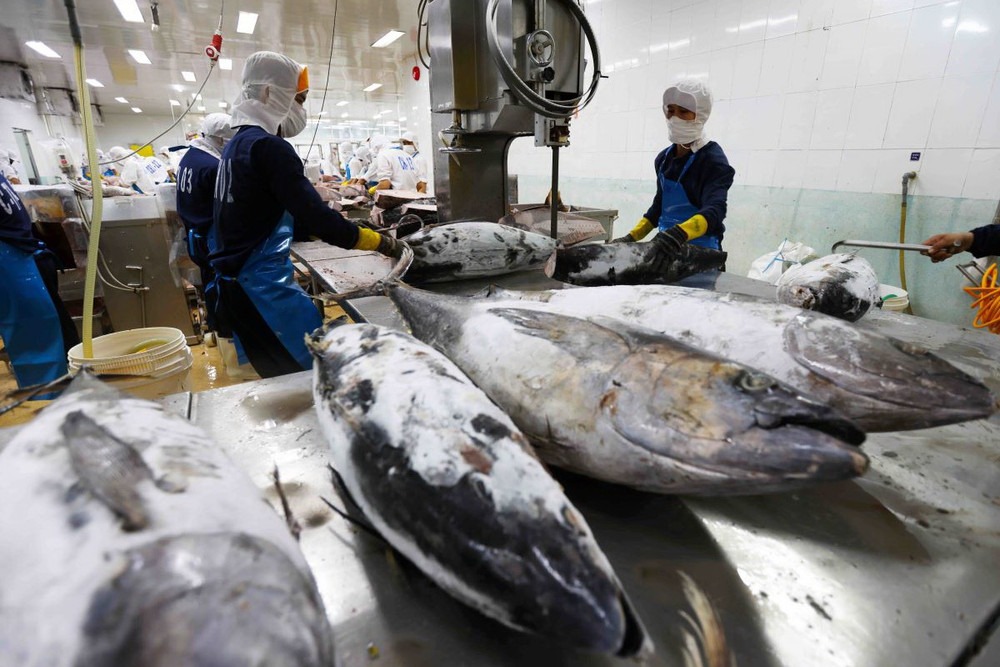HCMC – Vietnam’s tuna exports to the U.S. in August fell by nearly 21% year-on-year to just US$29 million, as new tariff policies curbed orders, according to the Vietnam Association of Seafood Exporters and Producers (VASEP).
During the January-August period, tuna exports to this market totaled US$223 million, down more than 13%.
VASEP attributed the slowdown to unfavorable tariffs that have dampened orders.
Since August, Vietnamese tuna has faced a combined 20% anti-dumping and reciprocal duty in the U.S., while rivals enjoy more favorable terms – Ecuador pays only 15% under a free trade agreement, and Indonesia and the Philippines are charged 19% under the GSP scheme.
This disparity has made Vietnamese products less competitive, with many long-standing customers shifting to alternative suppliers.
For many years, the U.S. has been the largest market for Vietnamese tuna, accounting for around 35-40% of export value. In 2024 alone, exports reached nearly US$387 million.
However, as exports to the U.S. slowed, shipments to the EU and the comprehensive and progressive agreement for trans-pacific partnership (CPTPP) bloc stood out.
In August, tuna exports to the EU reached US$17 million, up 6% year-on-year, with the Netherlands, Italy, and Germany all recording strong growth.
Japan’s imports surged by 88%, Canada continued its upward trend, while Mexico’s growth slowed. Emerging markets also posted sharp increases, such as the Philippines (up 72.4%) and Thailand (up 248%).
Overall, tuna exports in the year to August had totaled nearly US$633 million, down 2.3% against the same period last year. August alone saw a slight 1.4% rise to over US$91 million, but the industry remains under pressure.
VASEP forecast that the final months of the year could see improvement thanks to Christmas and New Year demand, though challenges persist, ranging from raw material prices and logistics costs to international competition.









